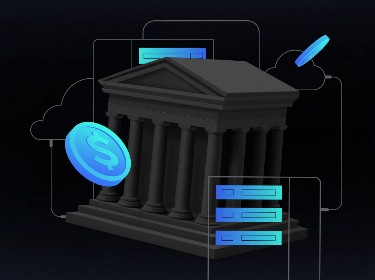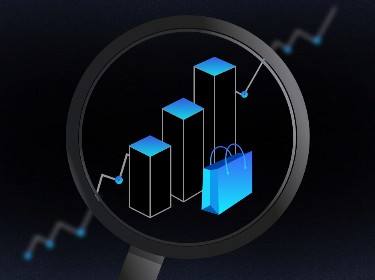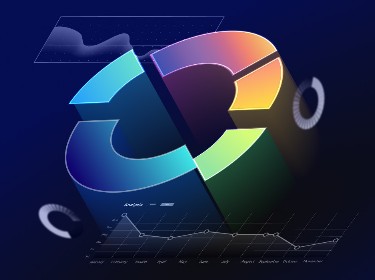Storytelling is not exclusively a personal art form. It is also a powerful tool for businesses. By applying storytelling to their data, companies can transform complex statistics into captivating narratives that make the information more compelling and drive strategic insights.
Data storytelling has proved to be a go-to business tool, especially when it is enhanced with data visualization, as it can elevate companies to a whole new level and unlock unprecedented insights and opportunities.
But what are the essential elements for maximizing the effectiveness of data storytelling, and how can you guarantee that it guides your business toward the intended outcome?
Check out this article to explore the basics and benefits of storytelling with data visualization and discover the most effective strategies for data visualization storytelling.
What is data storytelling?
Data storytelling is a method that applies narrative techniques to interpret and present data in a way that is both understandable and engaging for the audience. It involves structuring data into a coherent story and focuses on simplifying and humanizing complex information to make it more relatable and digestible.
Storytelling with data integrates accurate data analysis, a compelling narrative, and effective visualization to convey insights. These elements work together to present complex data in a format that is clear and accessible and resonates with and engages the audience and stakeholders.
Struggling to extract meaningful insights from your business data? Contact our team of expert big data consultants and engineers for professional assistance
What are the benefits of data storytelling?
![]()
Businesses can gain several benefits from storytelling with data. The most prominent ones include enhanced decision-making and communication, increased engagement, effective problem-solving, and improved memorability and persuasion.
Let’s take a closer look at each of these data storytelling advantages.
Enhanced decision-making and communication
Storytelling with data facilitates the transformation of complex data into actionable insights, which aids leaders and teams in making informed decisions. It also enhances strategic communication and helps companies to effectively convey important trends and analyses to stakeholders, thereby promoting consensus and driving focused business actions.
Discover the fundamentals of data-driven decision-making and learn how to effectively implement this approach in your business
Increased engagement
A well-crafted story, in contrast to mere data presentation, can more effectively capture and retain an audience’s attention by providing the necessary context and emotional connection. This, in turn, leads to enhanced comprehension and recall and makes the information more impactful.
Effective problem-solving
Effective problem-solving with data storytelling entails a clear exposition of important data points and trends that are often obscured in raw datasets, thus assisting businesses in pinpointing and systematically addressing operational issues. This technique also helps understand complex data connections and patterns that are vital for developing advanced, data-driven strategies to resolve complex business issues.
Improved memorability and persuasion
Presenting information in a narrative format makes it more likely for individuals to remember it — a crucial advantage in business scenarios where recalling key details is extremely important.
At the same time, the narrative structure of data storytelling tends to convince stakeholders effectively, especially in scenarios requiring persuasion for organizational change.
This combination of improved recall and convincing capacity renders data storytelling a helpful tool in business communications and strategic initiatives.
Stay ahead of the curve! Explore the top 15 business intelligence trends of 2025 and beyond to keep your business at the forefront of innovation
How to tell a story with data?
Effective storytelling with data in a business context requires a strategic approach that blends technical acumen with narrative techniques.
It starts with a deep dive into data analytics, where patterns, trends, and insights are meticulously extracted. This process involves sophisticated tools and methodologies like data mining, statistical analysis, and modeling, which a trusted predictive analytics company can help implement.
Then, the main goal is to translate these technical findings into a narrative that aligns with business objectives and resonates with the target audience. This involves crafting a storyline that highlights critical insights, supports strategic decisions, and drives action. Visualizations play a crucial role, too, responsible for turning complex data sets into clear, impactful visuals.
Not just data storytelling: empower your solution with our expert business intelligence services to unlock deeper insights and drive impactful decisions
The importance of visualization in data storytelling
Data visualization is important in storytelling due to its ability to transform into and present complex information in a concise and visually engaging manner. It helps businesses swiftly interpret and act on data by highlighting key trends, patterns, and outliers through graphical representations such as charts, graphs, and infographics. These all make abstract numbers and statistics tangible and facilitate easier comprehension.
Storytelling with data visualization simplifies decision-making and boosts strategy implementation, as stakeholders can immediately see and understand the implications of the data. Data visualizations also ensure consistent interpretation of data across diverse teams, reduce miscommunications, and align everyone on the same insights.
Plus, visual data stories engage audiences better and make presentations and reports more compelling and impactful.
Dive into our detailed guide showcasing the 10 best data visualization tools of 2024
Top 10 strategies for effective storytelling with data visualization
![]()
Effective storytelling with data visualization requires a blend of technical skill and creative strategy.
Below, we present the 10 approaches to enhance the impact and clarity of your visual data narratives.
1. Clarity and simplicity in design
Data storytelling gains strength from its ability to communicate complex information simply. By focusing on key data points and avoiding clutter, data visualizations make complex data understandable at a glance. This approach involves selecting the right type of graph or chart that aligns with the data’s story. For example, a line chart is suitable for showing trends over time, while a bar chart is ideal for comparing categories.
Experience our expert UX/UI design services that uniquely present data and perfectly articulate your brand's voice
2. Use of color for emphasis and differentiation
The strategic use of color in data visualizations can guide the viewer’s eye to key information. Therefore, it is crucial to choose a color palette that is not only visually appealing but also serves a functional purpose.
For instance, contrasting colors can highlight differences, while harmonious colors can indicate relatedness. The key lies in balancing aesthetic appeal with functional utility like a painter choosing the perfect hues to bring a canvas to life.
3. Narrative and consistent structure
Every compelling story has a beginning, middle, and end, and this applies to data visualization as well.
Start by setting the context (the beginning), which helps the audience understand what they are looking at. The middle further delves into the data, presenting the main insights and trends. Ultimately, the final part should offer conclusions or actionable insights. This structure guides the audience through the data journey, like a guide leading travelers through a complex landscape.
4. Interactivity for greater engagement
Interactive elements in data visualizations can transform a static experience into an engaging journey.
By allowing viewers to interact with the data, such as through filters, sliders, or clickable elements, they can explore the aspects that interest them the most. This not only makes the experience more engaging but also allows viewers to discover their own insights.
5. Consistency in style and formatting
Consistency in visual elements such as fonts, sizes, and styles is needed for a seamless data storytelling flow.
Applying uniform design principles across all visuals makes it possible to maintain a coherent narrative structure, which helps focus the audience’s attention on the content, thus minimizing distractions caused by inconsistent styling and enhancing the overall comprehension of the data presented.
6. Usage of analogies and metaphors
Employing analogies or metaphors can make complex data more relatable and easier to understand. So, for example, comparing sales growth to climbing a mountain can help the audience visualize the effort and progress in a familiar context. This technique, when used sparingly, adds a creative flair to data storytelling while keeping the narrative grounded and accessible.
7. Targeted audience analysis
A successful data visualization also considers its audience’s background and needs.
Professionals in a specific field often require detailed, technical visualizations, while a general audience might benefit more from simplified, high-level overviews.
Tailoring the complexity and depth of data presentations ensures that the message reaches the audience effectively.
8. Uniform data sourcing and credibility
Trustworthiness forms the backbone of any data visualization — therefore, you will be better off if you source data from reliable, credible sources and document these sources clearly. This practice will allow you to enhance the visualization’s credibility and enable viewers to verify and explore the data further if they wish.
PixelPlex offers a comprehensive range of data analytics services tailored to specific needs. Explore our offerings to find the perfect solution for your organization
9. Balanced data representation
Data visualizations should present a balanced view of the information and avoid any bias or misrepresentation. This involves careful selection and presentation of data to ensure that it accurately reflects the underlying information.
Overemphasis or underrepresentation of certain data points, on the other hand, can lead to misleading conclusions. Importantly, employing statistical rigor and ethical standards in data analysis is also important in order to maintain integrity and trustworthiness in the conveyed message.
10. Contextual relevance and timeliness
The impact of data visualization storytelling is heavily reliant on their relevance to current events or industry trends. Aligning visualizations with timely topics or emerging trends makes the data more compelling and meaningful to the audience.
This strategy implies continuously updating data sources and ensuring that visualizations reflect the most current information. In addition to this, proactive monitoring of evolving trends and news is paramount to ensure that the data visualizations remain relevant and insightful for the audience.
How PixelPlex can help
Storytelling with data is a vital tool for crafting impactful business strategies. Plus, when coupled with the capabilities of data visualization, it enables a more nuanced and effective communication of complex information and fosters a data-driven culture in organizations.
Once you decide to embrace data storytelling, PixelPlex stands ready to offer specialized data visualization services, catering to a wide array of industry sectors.
Our vast expertise encompasses data visualization consulting, design, implementation, and dedicated support and maintenance. We also specialize in Power BI and Tableau consulting, ensuring your business harnesses the full potential of data visualization.
Contact us now and discover how our services can revolutionize your data strategy.




